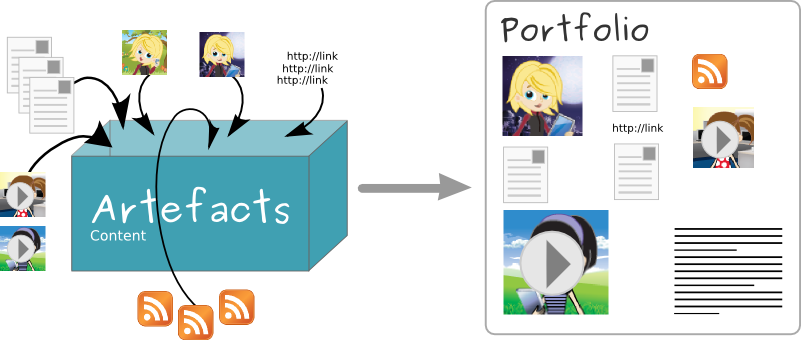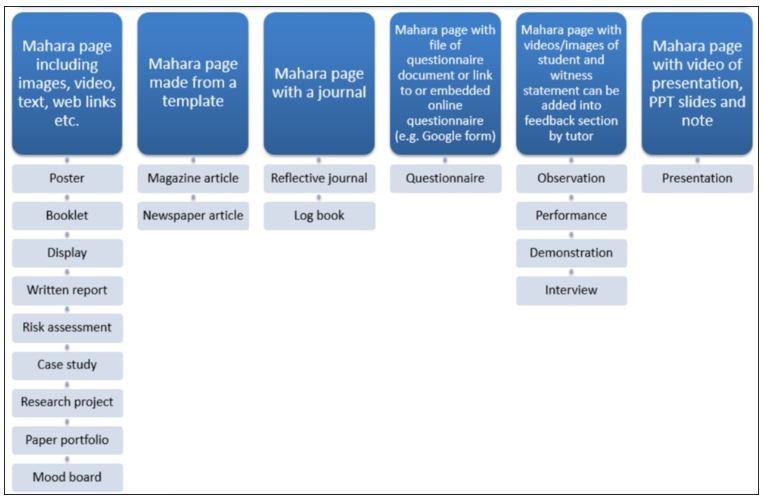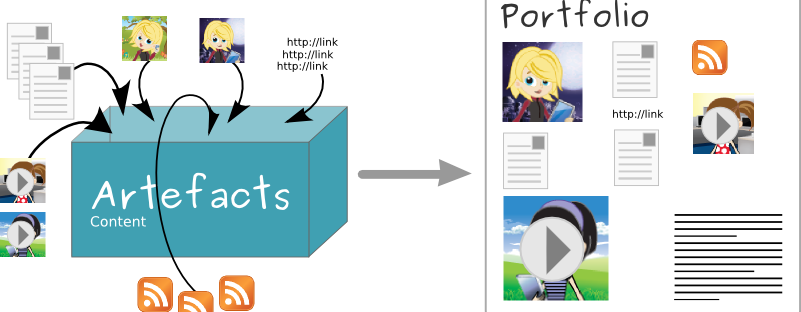Mahara e-portfolios are used across the Faculty of Arts and Humanities (A&H) to broaden the assessment diet, support practical and situated learning and build digital literacies. Increasingly, teaching in A&H lends itself to the use of Mahara as both a site for a product of student learning. This will be of interest to colleagues who are interested in exploring and developing the use of e-portfolios in their own areas.

Mahara is a ‘recommended’ technology at King’s and is used in concert with KEATS. As an e-portfolio platform, it allows students to create and curate any number of pages, which are populated with digital artefacts that are either uploaded or embedded from the web. E-portfolios, as the name suggests, particularly lend themselves to evidencing and assessing work where an essay would not suffice. This may be because the submission is intended to be built up gradually over time, or contains some element of self-reflexive learning; E-portfolios are useful for making sense of learning and achievements across disparate parts of the curriculum and making coherent links between different stages of learning. Mahara also effectively supports group working and submission, providing a shared online working and collaboration space that can be used asynchronously..
A&H was an early adopter of Mahara and its use has continued to fan outwards in recent years. In the Modern Language Centre it is used to support and evidence language learning. The Liberal Arts departments have used Mahara across a number of very large modules to broaden the assessment diet. One example is ‘Lives of London’ a module which involves extensive fieldwork and practical and group study. In the past year, the ‘Roman London’ module in Classics has adopted Mahara as an appropriate mechanism for recording and assessing the archaeological work which students undertake. In 2019/20, Theology and Religious Studies came on board with Mahara – and I am keen to see its use continue to develop across the Faculty. A final benefit has come in the form of sharing of good practice among staff. Colleagues from the departments mentioned above presented jointly at the Excellence in Learning and Teaching Conference in 2019: an interactive discussion entitled Research, Arguments, and Creative Thinking: e-Portfolios in the Humanities.

As with any TEL, adopting and using Mahara is not without its challenges; most especially where the technology needs to be adapted or made to fit around existing workflows and policy. For example, Mahara is not currently integrated with Turnitin (TII), so similarity checking is not available; and TII cannot be employed by students as a self-diagnostic on their portfolio submissions. This also means that marking must take place using the tools available in the standard KEATS assignment. This represents a departure of staff who are used to marking with Feedback Studio. We have also drawn on the Mahara community to tweak our instance to support necessities such as anonymous marking. I have found that students especially require some degree of upfront training in Mahara and offer short inductions to modules coming onboard; and refreshers to those returning. Whilst pointing towards the CTEL support resources for Mahara, I have also created a suite of ‘cheat sheets’ to provide guidance on common workflows such as creating template pages for students to use, or submitting work on behalf of a group.
- Mahara can be used to broaden the assessment diet, especially on modules with a more practical, lab or field-trip focus.
- Mahara seems to be viewed/understood at King’s as a group working tool, as much (or more) than an individual portfolio, and is used as such.
- The integration with KEATS is sound, although this does require a degree of administrative support; for examples where group submission is to be employed.
- Provided initial support is sound, it can develop confidence and skill in using digital tools.
- Upfront training/induction for students is (I believe) a necessity; although this diminishes as use of Mahara in a given department matures over time, and the expertise embodied in the staff grows accordingly.
- As a ‘recommended’ technology, this is free at the point of use and central support is available.
I would highly recommend Mahara to any colleagues who are seeking to develop student learning opportunities through TEL; and they are welcome to contact me with any questions.
Useful Links:
Written by David Reid Matthews
David Reid Matthews is the TEL Manager for Arts and Humanities, and joined King’s in 2018.
